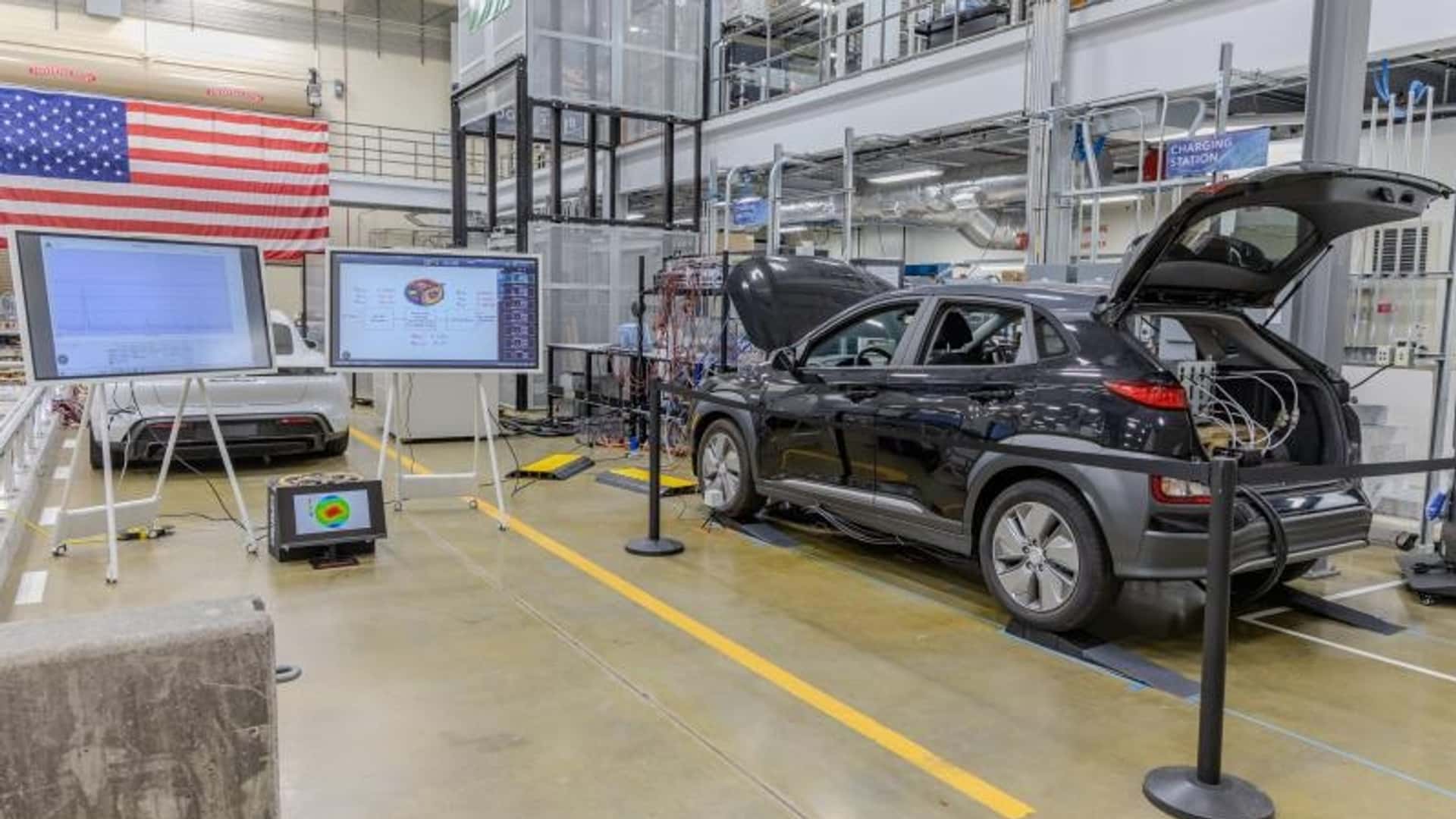
Imagine pulling up in a garage or parking lot in your nearly depleted EV, and having no pesky charging cables to fiddle with, no payment systems to navigate, and no charging apps to download. Just park and walk away. Researchers are taking wireless charging seriously, and one U.S. lab has achieved a breakthrough: 96% efficiency in a 100kW wireless charging test.
Tennessee-based Oak Ridge National Laboratory, the same lab at the forefront of atomic discoveries in the 1940s, and several other breakthroughs in supercomputing, materials sciences and energy storage, recently charged a Hyundai Kona Electric using electromagnetic waves with 96% efficiency.
Get Fully Charged
Inadequate charging infrastructure has stymied broader EV adoption.
Many companies are pushing to develop wireless charging technology for EVs. The biggest roadblock is efficiency. Conventional setups bleed a lot of energy as heat, but a new coil design from the Oak Ridge National Laboratory may solve that problem.
ORNL researchers charged the Kona Electric using a novel solution, “polyphase electromagnetic coupling coils.” These coils allow energy to be transferred at a higher density than conventional coils, achieving fast charging speeds of around 100 kilowatts.
Achieving 96% efficiency is a big deal. EV powertrains are vastly more efficient than internal combustion engines, but charging them isn’t 100% efficient. If you’ve fully charged your EV from 0-100%, you might have observed that the charger dispenses more kilowatt-hours than the battery can even hold. These surplus electrons typically dissipate during transmission, often converting into heat.
One Car and Driver test showed that a Tesla Model Y Performance’s 81 kWh battery consumed 92.2 kWh when fully charged, leading to about 14% losses. The losses would vary depending on the EV and the charger itself. But charging losses in the ORNL test seem to be only around 6%, which is great. That means this tech could be more efficient than even conventional wired charging.
“We’ve achieved the highest power density in the world for a wireless charging system for this class of vehicle,” ORNL’s Omer Onar said. Researchers added that they charged the EV with a five-inch air gap. They also say that the new coils are designed to be lightweight and enable higher-density energy flow.
How much does this solution cost? Can it ever be democratized? How perfectly do you have to align the car over the coils? These are certainly important questions. But efficient, commercially available wireless charging is no longer an unrealistic proposition. Several electric cars in China get wireless charging capability from the factory, like the Zhiji L7, Geely EC-8, and Changan CX30.
Even Tesla is interested in the technology. Elon Musk’s company acquired German wireless charging start-up Wiferion last year and sold it within months. But it reportedly kept some of its engineers. American start-up Witricity, which deploys several wireless charging stations in China for commercial fleets, has already showcased its technology by retrofitting a Ford Mustang Mach-E.
Several other wireless charging projects in the U.S. are either in the pilot stage or have been deployed for early adopters, including start-ups in Brooklyn, Indianapolis, and Los Angeles. The sleek Chrysler Halcyon concept also has wireless charging capability, and Ford has also patented an “in-road wireless charging coil.”
For the technology to make any real-world difference in the lives of EV owners, several things would have to fall into place. This seems like a capital-intensive affair, and the recent slow-than-expected EV sales curve might discourage OEMs from investing in something that’s still so experimental.
But with so many pilot projects underway, and real theoretical advantages, wireless charging seems like it’s here to stay, unlike so many other innovations that just go dead on arrival.

